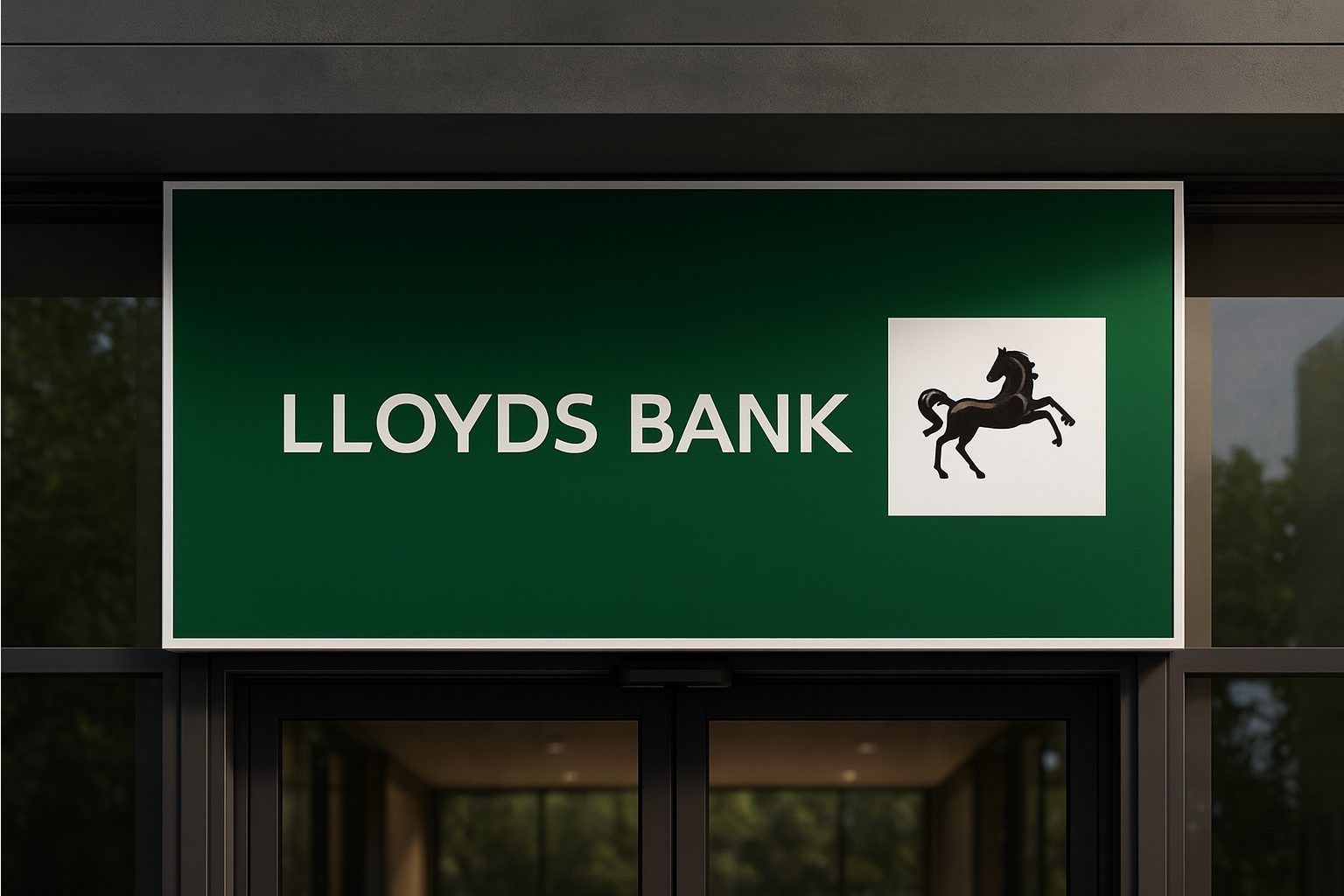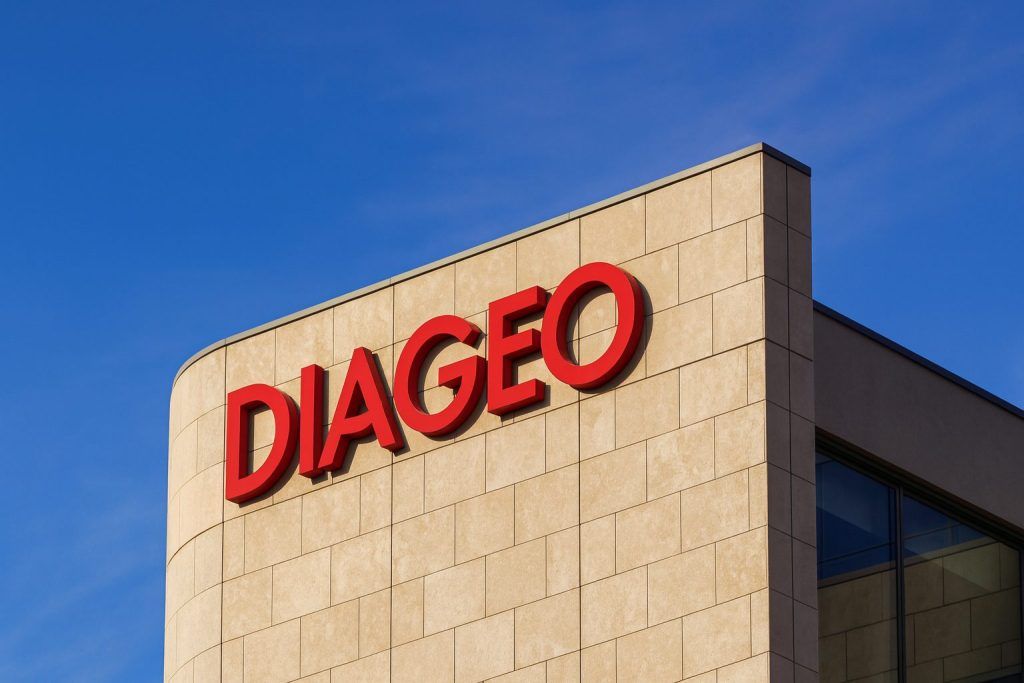London, 26 November 2025 – Lloyds Banking Group plc (LON: LLOY, LLOY.L) is trading close to its 12‑month highs today as investors digest fresh signs that the UK Autumn Budget will not target banks with new taxes, while the FTSE 100 lender keeps shrinking its share count through an aggressive £1.7bn buyback.
Key points at a glance
- Share price today: Around 91p in London late morning, versus a previous close of 90.68p and a 52‑week range of roughly 52p–96p. That leaves Lloyds about 5% below its mid‑November peak and up more than 60% over 12 months. [1]
- Budget relief: Reports ahead of Chancellor Rachel Reeves’ 26 November Budget indicate no windfall tax or extra levy on banks, helping Lloyds, Barclays and NatWest to rally this week. [2]
- Buyback rolling on: Lloyds bought 10.64m shares on 25 November at around 90p each, part of its £1.7bn on‑market repurchase plan that has already retired about 1.8bn shares this year. [3]
- Digital & AI story: Euromoney recently rated Lloyds “Outstanding” among global digital banks, citing over 23m digital customers and heavy AI investment – even as its chief data & analytics officer Ranil Boteju is poached by Commonwealth Bank of Australia to become its chief AI officer. [4]
- Fundamentals: For the first nine months of 2025 Lloyds delivered about £3.3bn statutory profit, c.12% return on tangible equity (higher excluding a big motor‑finance provision) and 3.0%‑plus net interest margin, while keeping capital strong at c.13.8% CET1. [5]
Lloyds share price today: still near year highs
Real‑time data from London South East shows Lloyds’ stock changing hands at around 91.0p late Wednesday morning, up roughly 0.4% on the day. The intraday range so far runs from about 90.8p to 91.6p, after closing yesterday at 90.68p. [6]
Over the last year the shares have climbed from lows near 52p to a 52‑week high just under 96p earlier in November, a gain of roughly 65–80% depending on the exact start point. [7] Lloyds’ market value now sits a little above £53bn. [8]
For context:
- The FTSE 100 has also firmed this week as bank stocks led the index higher. [9]
- Yesterday (25 November), Lloyds jumped about 3.8% after a flurry of headlines suggesting Reeves would spare banks from further tax hikes, outpacing the wider market. [10]
The rally caps what AI‑driven stock‑research site Meyka describes as a “sharp increase” in Lloyds’ valuation this month, even as analysts warn about the drag from falling interest rates and a cooling UK economy. [11]
UK Autumn Budget 2025: why Lloyds is in the spotlight
Today’s Autumn Budget 2025, due at 12:30pm GMT, is the big macro event for all UK banks. Live blogs from outlets including Yahoo Finance and specialist payments media highlight expectations of tens of billions in additional tax revenues overall, making this one of the most revenue‑raising Budgets in decades. [12]
However, in the run‑up to the speech:
- Bloomberg and other outlets reported that Reeves has decided against raising specific bank taxes, including leaving the existing bank surcharge and levy unchanged and not introducing a new windfall tax on lenders’ income from central‑bank reserves. [13]
- The Guardian and other UK media say this has soothed fears that Lloyds and peers would face another targeted raid, helping their shares climb sharply on Tuesday. [14]
That reprieve comes despite a sustained campaign from groups such as Positive Money, which has called for a 38% windfall tax on big‑bank profits that could have raised an estimated £14bn in 2025 alone. [15]
Analysts quoted by Proactive Investors caution that escaping a tax hike is “not a free lunch” for Lloyds and rivals: the government could still seek commitments on lending, SME support or green finance in exchange for a softer tax regime. [16]
For investors in LLOY, the key takeaway is that regulatory risk has eased for now, but political scrutiny of bank profits – especially after a big share‑price rally – is likely to remain intense.
£1.7bn buyback keeps shrinking the share count
Alongside the macro narrative, Lloyds is doing a lot of heavy lifting for its own share price via large‑scale repurchases.
Regulatory filings show that on 25 November 2025 the bank bought back 10,643,698 ordinary shares from its broker Morgan Stanley at prices between 88.76p and 90.64p, with a volume‑weighted average of 89.96p. All of these shares are intended to be cancelled, permanently reducing the share count. [17]
This is just the latest in a string of daily RNS notices in November:
- 24 November: about 10.84m shares repurchased. [18]
- Mid‑November: multiple days with 10–11m shares bought back, including on 18 November when Lloyds repurchased 10.75m shares. [19]
According to secondary reporting on the programme, Lloyds had already acquired around 1.8bn shares for £1.4bn by the end of September as part of its £1.7bn buyback, implying the current phase is about finishing that allocation by year‑end. [20]
TipRanks notes that the intention is to cancel all repurchased shares, with the goal of boosting earnings per share (EPS) and return on equity over time. Its coverage also highlights a consensus “Buy” stance among analysts it tracks, with a typical price target a little above £1.10. [21] (Those are third‑party views rather than a recommendation.)
For shareholders, the buyback has two main effects:
- Mechanical support for the share price while the programme is active.
- Higher per‑share metrics (EPS, dividends per share, tangible book per share) if earnings and capital stay robust.
Digital & AI ambitions: plaudits and a key departure
While markets focus on the Budget, Lloyds’ strategic story this autumn has been dominated by digital transformation and AI.
Euromoney: “Outstanding” digital bank
On 7 November, the Group announced that Euromoney’s 2025 MarketMap of the world’s best digital banks rated Lloyds Banking Group as “Outstanding”, citing: [22]
- Over 23 million digitally active customers and 21 million mobile app users.
- Digital channels accounting for more than 95% of retail sales.
- Over half of applications now running in the cloud, with a major reduction in legacy systems.
- Around 8,000 tech and data specialists hired since 2021.
- More than 50 live generative‑AI use cases across customer service, operations and engineering, expected to deliver around £50m of incremental value in 2025, and a large contribution to £1.5bn of additional revenues and cost savings targeted from strategic initiatives by 2026.
The award underlines Lloyds’ ambition to be seen not just as a traditional high‑street lender but as a leading digital and AI‑driven bank.
Ranil Boteju exits to CBA
There is, however, a twist to the AI narrative today.
Capital Brief reports that Commonwealth Bank of Australia (CBA) has hired Ranil Boteju, currently chief data and analytics officer at Lloyds, to become its chief AI officer from early 2026. [23]
Boteju has been responsible for Lloyds’ AI, data and machine‑learning strategy, so his move represents a notable loss of senior talent just as Lloyds leans heavily into AI. The appointment also shows how aggressively global banks are competing for experienced AI leaders.
In practice, the impact will depend on how smoothly Lloyds manages succession and whether its broader data‑science and engineering bench can maintain momentum on existing AI projects.
Strategic deals: Curve and Schroders Personal Wealth
Lloyds has also been busy reshaping its portfolio.
Fintech acquisition: Curve UK
On 19 November, Lloyds announced an agreement to acquire Curve UK Ltd, the London‑based fintech behind the Curve digital wallet, which lets customers consolidate multiple cards and accounts into a single app and payment card. [24]
Alliance News coverage of the deal emphasises that Lloyds sees Curve as a way to:
- Strengthen its digital wallet and payments offering.
- Use open banking data and card‑consolidation features to deepen engagement with younger and more digitally native customers.
This acquisition dovetails with both the Euromoney recognition and Lloyds’ long‑stated strategy of “Helping Britain Prosper” by supporting customers across life events with digital tools and personalised insights. [25]
Wealth expansion: Schroders Personal Wealth
In its Q3 interim management statement, Lloyds also flagged the full acquisition of Schroders Personal Wealth (SPW), previously a joint venture with Schroders. The bank says the acquired business brings around £17bn of assets under administration and accelerates its push into higher‑value wealth‑management relationships. [26]
Together, Curve and SPW broaden Lloyds’ revenue mix beyond core UK retail lending, giving it more exposure to fees and wealth management – helpful if net interest income comes under pressure.
Fundamentals check: Q3 2025 snapshot
Lloyds’ latest published numbers are for the nine months to 30 September 2025, set out in its Q3 Interim Management Statement. Key highlights include: [27]
- Statutory profit after tax: about £3.3bn, down from £3.8bn a year earlier, largely because of an £800m charge related to motor‑finance commission remediation booked in Q3.
- Return on tangible equity (RoTE): around 11.9%, or c.14.6% if you strip out that one‑off motor‑finance charge.
- Underlying net interest income: roughly £10.1bn, up 6% year‑on‑year, with a net interest margin around 3.04%, 10 basis points higher than the prior year.
- Asset quality: an underlying impairment charge of £618m, with an asset‑quality ratio of c.18 basis points, still low by historical standards.
- Capital & funding: risk‑weighted assets of about £223bn and CET1 ratio of 13.8%, after accounting for dividends and buybacks.
- Tangible net asset value per share: around 55.0p, up 2.6p so far this year, helped by buybacks and hedge‑reserve unwind.
Management guidance for full‑year 2025 points to: [28]
- Underlying net interest income of c.£13.6bn.
- Operating costs around £9.7bn (including the impact of acquisitions).
- Asset‑quality ratio of roughly 20bps.
- RoTE of about 12% (higher excluding the motor‑finance charge).
- Capital generation of around 145bps, or about 175bps excluding the one‑off charge – consistent with external commentary that calls Lloyds’ capital production “steady and predictable”. [29]
Overall, the numbers suggest a bank that remains highly profitable and well‑capitalised, but dealing with legacy remediation issues and a maturing interest‑rate cycle.
Rate trends, mortgages and margin pressure
One of the big questions hanging over Lloyds into 2026 is how quickly interest rates fall – and how that hits margins.
Mortgage‑market data compiled by trade outlets such as Mortgage Professional America shows UK lenders, including Lloyds, continuing to trim fixed‑rate deals into late November. MPA’s latest table, updated 26 November, highlights a five‑year fixed “Club Lloyds” first‑time‑buyer product around 4.1% with no set‑up fee, one of 40‑plus Lloyds products currently on the market. [30]
Internationally, platforms tracking Lloyds Bank’s continental offerings show variable rates starting near 3.25% for top‑rated energy‑efficient properties, underscoring how far mortgage pricing has come down from the peaks of 2023–24. [31]
Cheaper mortgages are good for household affordability and loan growth, but they also compress net interest margins – a risk several investor commentaries flag when questioning how sustainable Lloyds’ share‑price rally might be if rates fall faster than expected. [32]
Opportunities and risks for LLOY investors
Putting it all together, here’s how the picture looks as of 26 November 2025.
Tailwinds
- Tax overhang eased: With Reeves apparently shelving new bank‑specific taxes in today’s Budget, Lloyds avoids a near‑term hit to earnings and capital. [33]
- Capital‑light growth: Deals like Curve and Schroders Personal Wealth tilt the business slightly away from pure balance‑sheet lending towards higher‑fee digital payments and wealth. [34]
- Buybacks and dividends: Strong capital generation lets Lloyds return large amounts of surplus capital – £1.7bn of buybacks this year on top of ordinary dividends – boosting per‑share metrics. [35]
- Digital leadership: Recognition from Euromoney and external AI indices confirms that Lloyds is ahead of many peers in digital adoption, potentially supporting lower costs and higher cross‑sell over time. [36]
Headwinds
- Valuation after a big run: After rising more than 60–80% from its lows, LLOY is no longer the deep‑value play it appeared in 2022–23. Some commentators worry that any disappointment on earnings or the economy could trigger a sharp pullback. [37]
- Interest‑rate down‑cycle: Falling mortgage and loan rates, while positive for customers, may erode net interest margins more quickly than volume growth can offset. [38]
- Political risk isn’t gone: Even without a new windfall tax today, pressure groups and some Labour backbenchers continue to push for higher bank contributions to fund public services. Future Budgets or ad‑hoc levies can’t be ruled out. [39]
- Execution and talent risk in AI: Lloyds’ AI transformation is ambitious, and the exit of a senior data leader like Ranil Boteju shows how hot the talent market is. Maintaining momentum across dozens of AI use cases will be crucial. [40]
What to watch next
For anyone following Lloyds Banking Group (LLOY) over the coming days and weeks, the main catalysts are:
- Detailed Autumn Budget 2025 documents and any fine print affecting bank regulation, capital or consumer lending. [41]
- Ongoing daily RNS updates on the share‑buyback programme. [42]
- The completion of the Curve acquisition and full integration of Schroders Personal Wealth. [43]
- The scheduled Group strategy update on “Digital & AI” (6 November event replay) and the preliminary 2025 results on 29 January 2026, where management will update guidance. [44]
For now, though, the story on 26 November 2025 is straightforward: a relieved market, a bank‑friendly tax outcome, and a buyback‑turbocharged stock that is trading close to multi‑year highs while trying to reinvent itself as one of Europe’s most digital‑first lenders.
This article is for information only and does not constitute investment advice or a recommendation to buy or sell any security. Markets move quickly; prices and figures are approximate and may have changed since time of writing.
References
1. shareprices.com, 2. www.theguardian.com, 3. www.investegate.co.uk, 4. www.lloydsbankinggroup.com, 5. www.lloydsbankinggroup.com, 6. shareprices.com, 7. shareprices.com, 8. shareprices.com, 9. www.theguardian.com, 10. www.theguardian.com, 11. meyka.com, 12. www.thetimes.com, 13. www.bloomberg.com, 14. www.theguardian.com, 15. positivemoney.org, 16. www.proactiveinvestors.co.uk, 17. www.investegate.co.uk, 18. www.tradingview.com, 19. www.stocktitan.net, 20. somoshermanos.mx, 21. www.tipranks.com, 22. www.lloydsbankinggroup.com, 23. www.capitalbrief.com, 24. shareprices.com, 25. www.lloydsbankinggroup.com, 26. www.lloydsbankinggroup.com, 27. www.lloydsbankinggroup.com, 28. www.lloydsbankinggroup.com, 29. pestel-analysis.com, 30. www.mpamag.com, 31. www.easymortgage.nl, 32. meyka.com, 33. www.bloomberg.com, 34. shareprices.com, 35. somoshermanos.mx, 36. www.lloydsbankinggroup.com, 37. cryptorank.io, 38. www.mpamag.com, 39. positivemoney.org, 40. www.capitalbrief.com, 41. www.thetimes.com, 42. www.londonstockexchange.com, 43. shareprices.com, 44. www.lloydsbankinggroup.com








